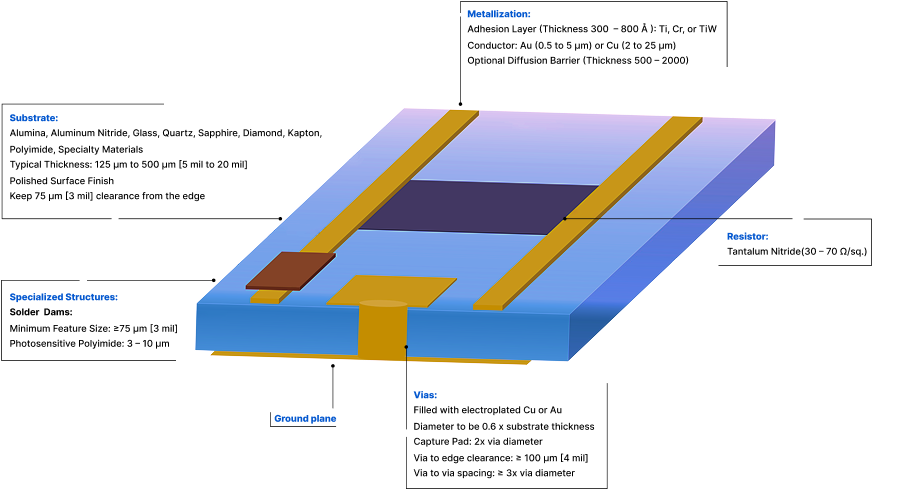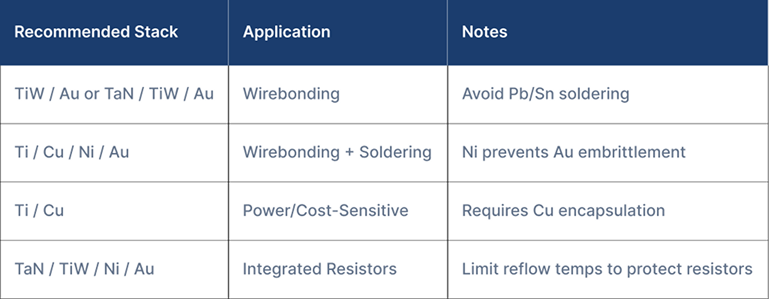Alumina
Stable ceramic with excellent dielectric properties. Great for RF applications up to 30 GHz.
Aluminum Nitride
High thermal conductivity and RF compatibility — ideal for thermally intensive systems.
Glass
Ultra-smooth, planar — perfect for interposers, 3D packaging, and microfluidics.
Sapphire
Chemically inert, optically transparent, biocompatible — used in medical + RF builds.
Quartz
Ultra-low dielectric loss and thermal expansion. Suitable for systems beyond 100 GHz.
Diamond
Top-tier thermal management and high-frequency performance. Ideal for power RF designs.
Kapton Film
Ergonomic, flexible, and lightweight — used in medical imaging.
Silicon
A proven base for MEMS, sensor integration, and microfluidic platforms.
Polyimide
For multilayer medical circuits supports lightweight, ergonomic builds with minimal assembly.










